3" 150LB tilting disc check valve is made according to API 6D & BS1868 standard. The valve body is made of ASTM A351 CF8M. It has the structural characteristics of tilting disc type, bolt cover. Its connection mode is RF.
Payment:
30% when order confirmed, 70% before shipmentProduct Origin:
ChinaColor:
CustomizationShipping Port:
Shanghai, ChinaLead Time:
30~60 days Ex Works after order confirmationMaterial:
ASTM A351 CF8MProduct Description
|
Type |
Tilting Disc Check Valve |
|
Size |
3" |
|
Pressure |
150LB |
|
Connection |
RF |
|
Body Material |
ASTM A351 CF8M |
|
Design Norm |
API 6D & BS1868 |
|
End Flange Dimensions |
ANSI B16.5 |
|
Test & Inspection Code |
API 598 |
|
Temperature |
-29 ~ 325°C |
|
Applicable Medium |
Water, Oil and Gas |
Features
1. The tilting disc design reduces fluid resistance and pressure loss, making the medium flow smoother and improving system efficiency;
2. Due to the tilting design and gravity effect of the valve disc, it can quickly close, reducing the risk of medium backflow, effectively preventing water hammer phenomenon, and protecting pipelines and equipment.
Technical Drawing
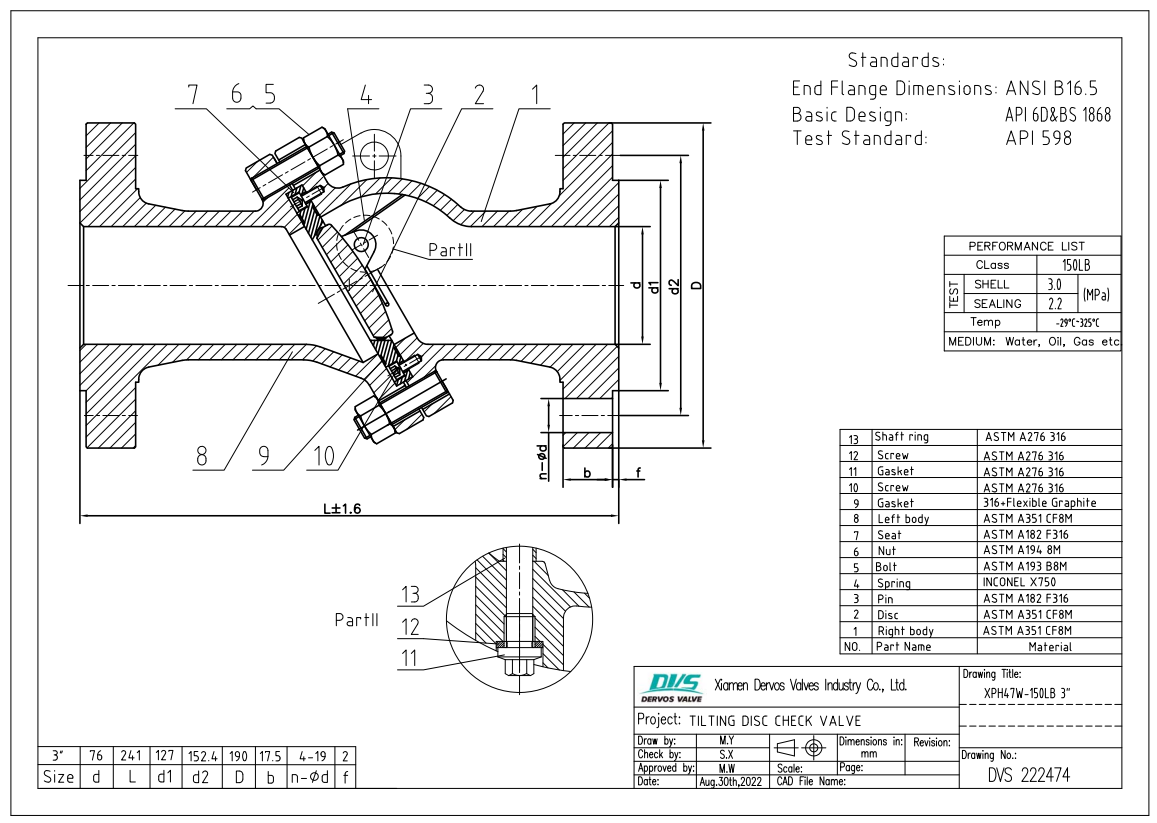
Dimension Checking
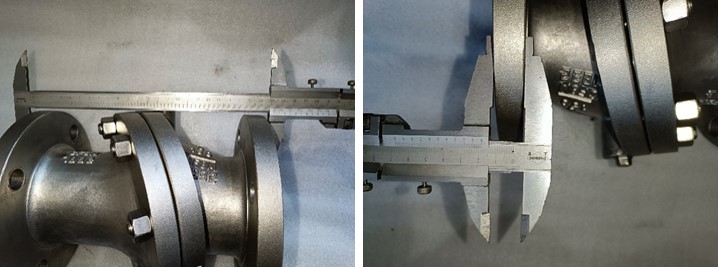
Pressure Testing
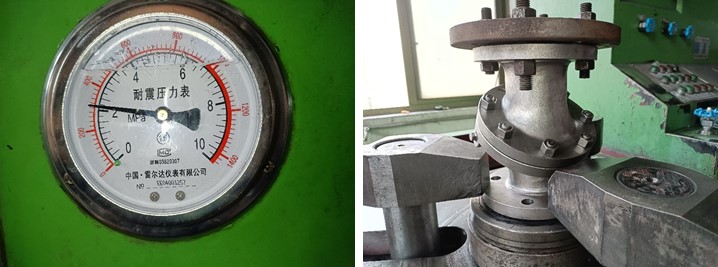
Nameplate & Packing

Inspection report
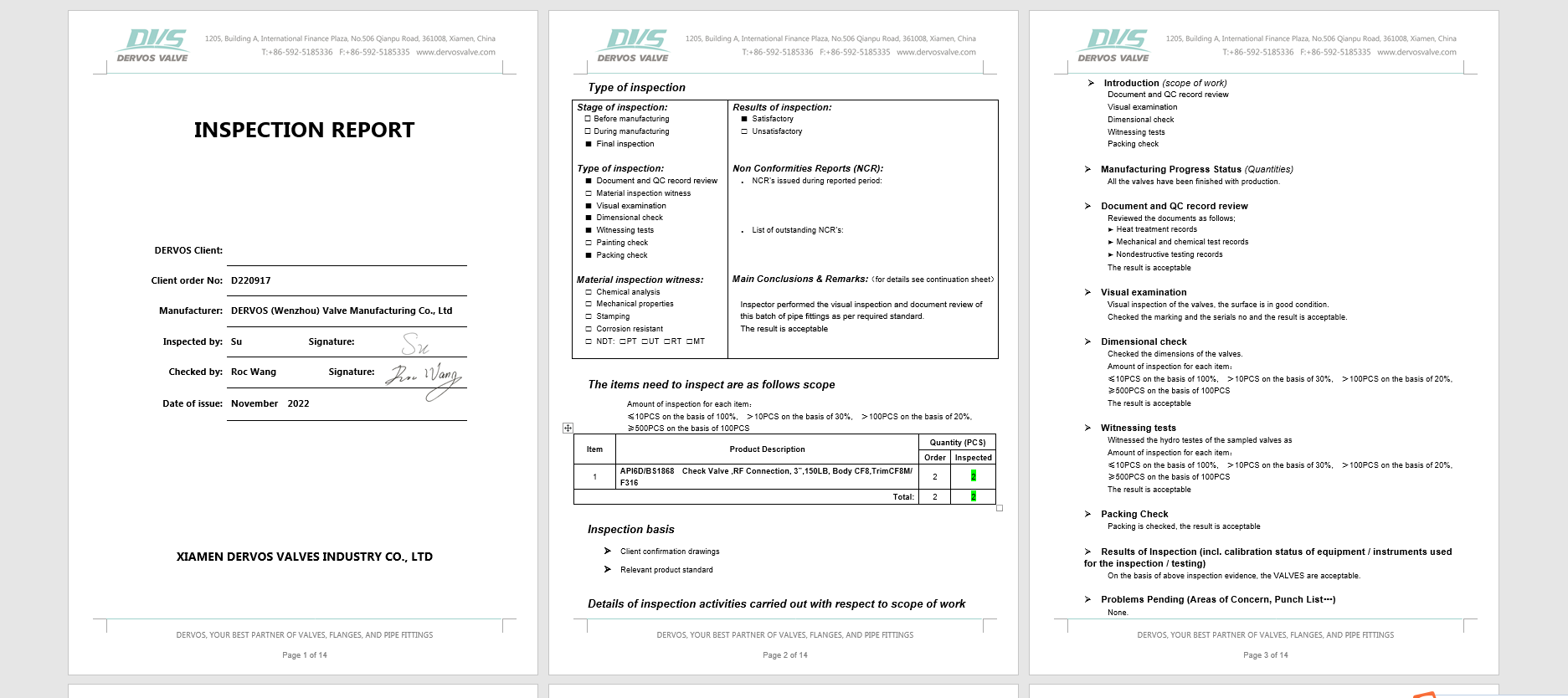
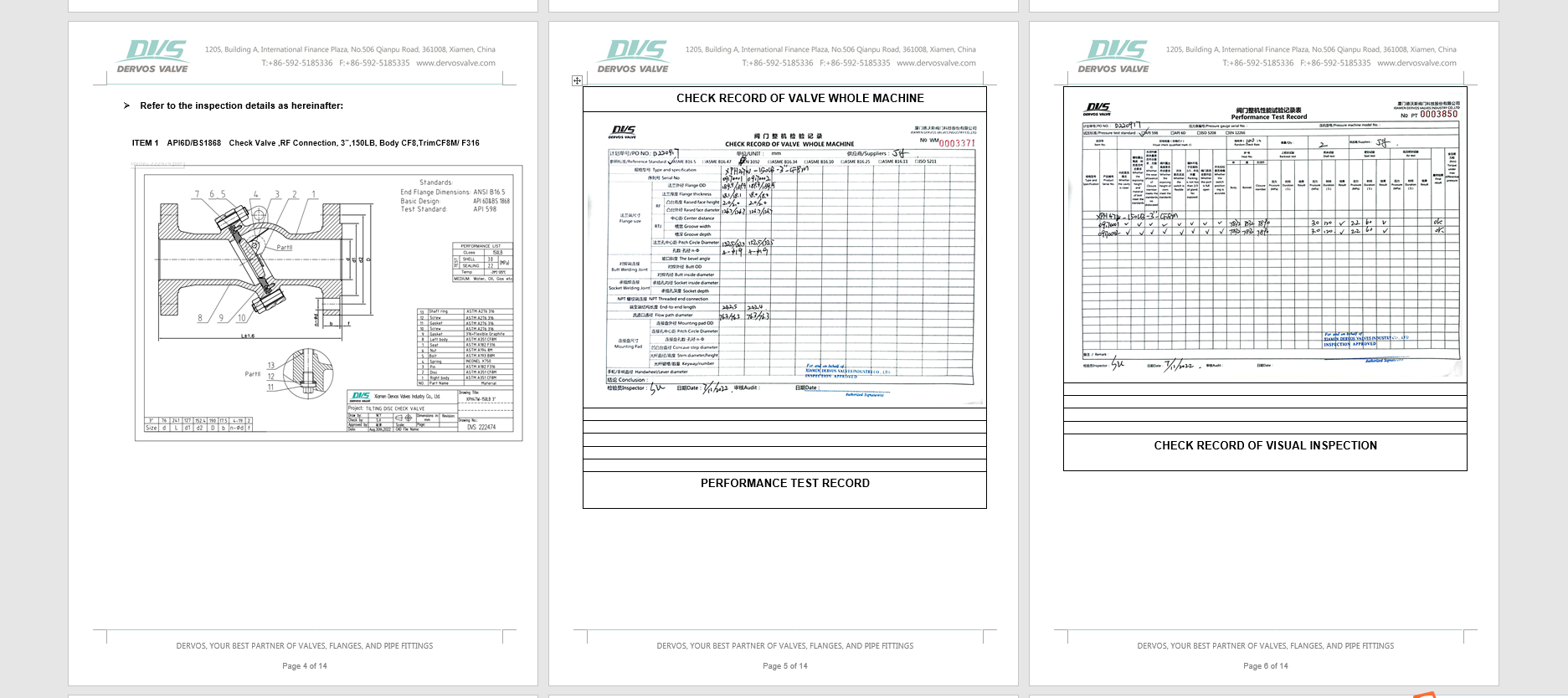
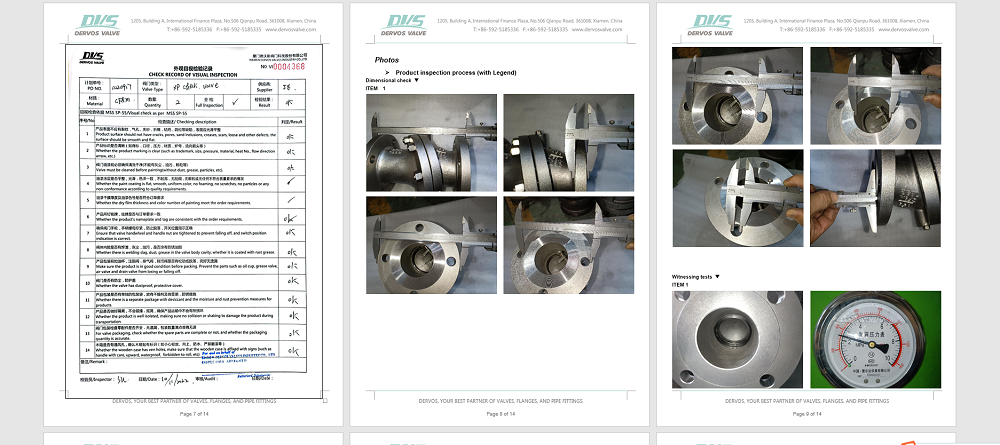
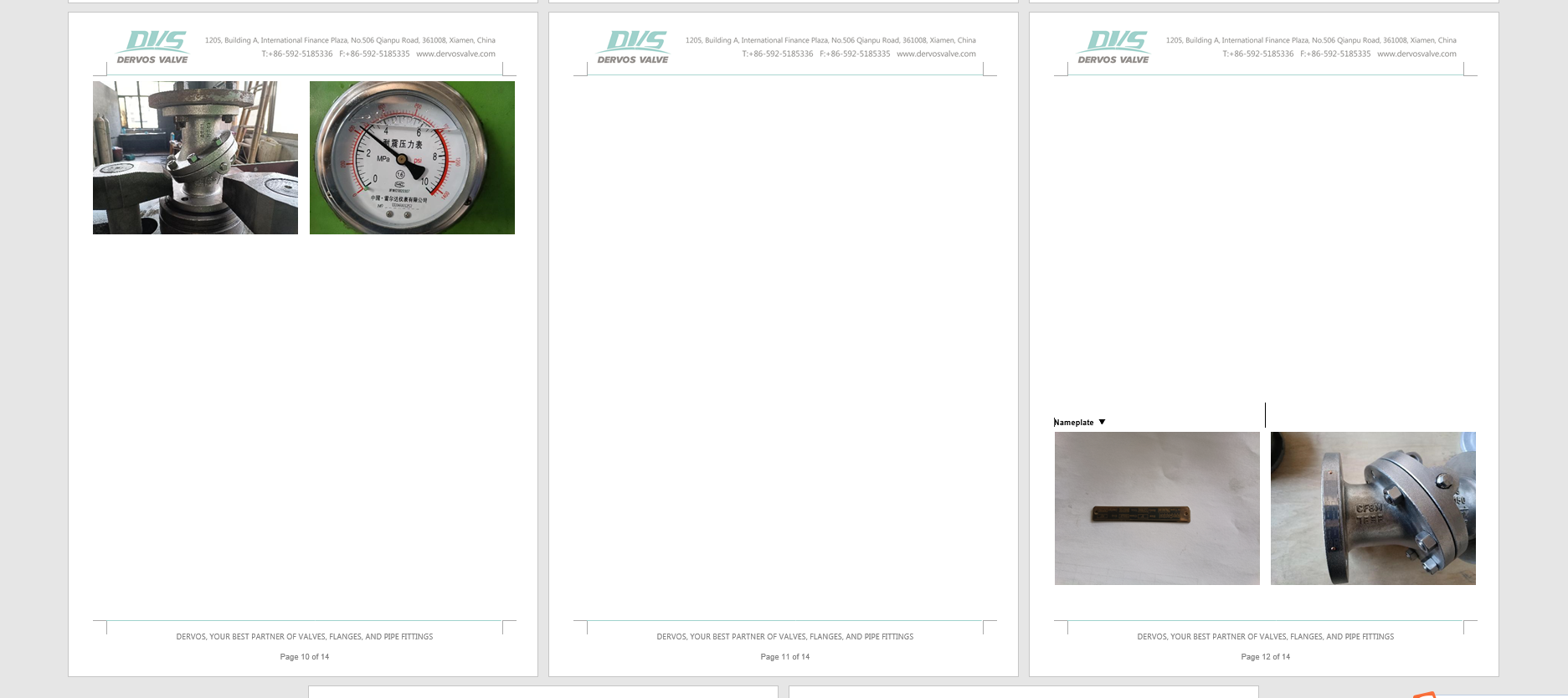
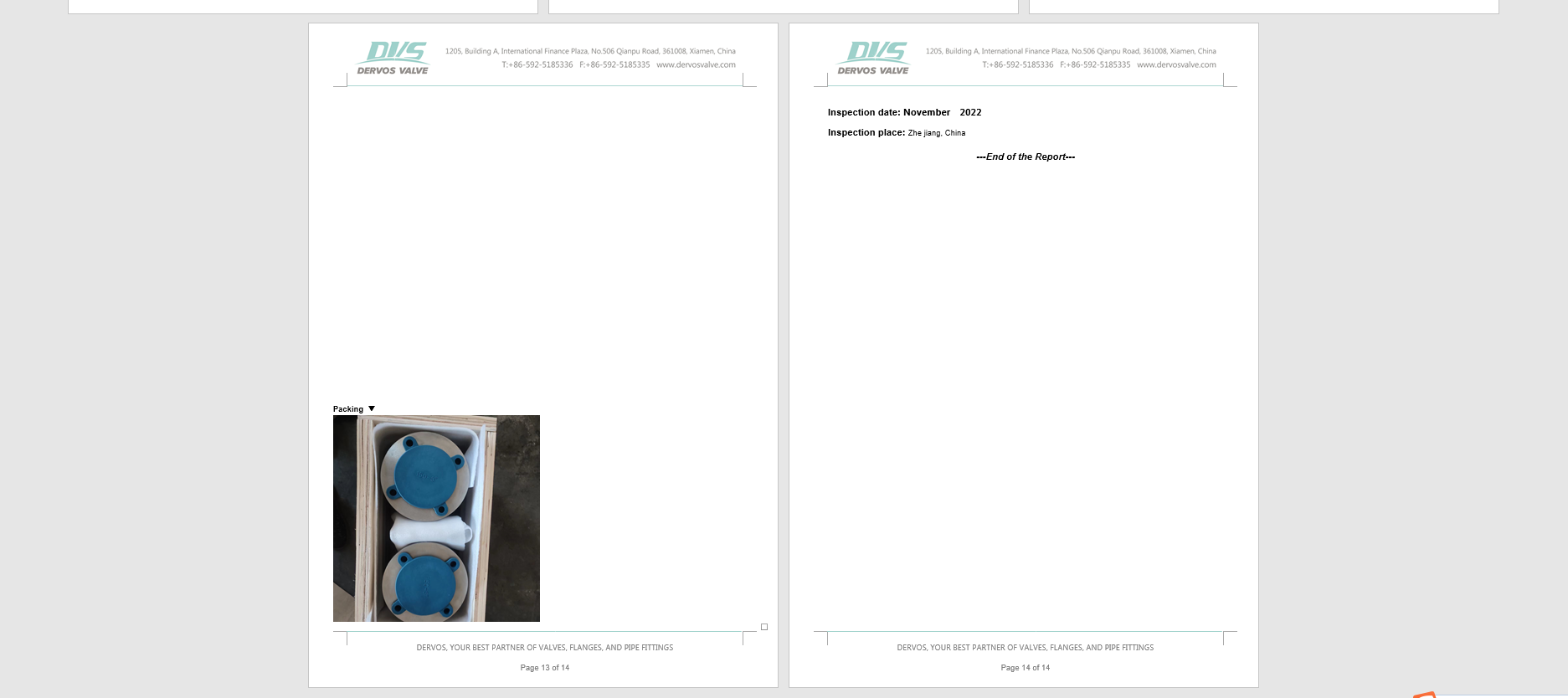
If you are interested in our products and want to know more details,please leave a message here,we will reply you as soon as we can.